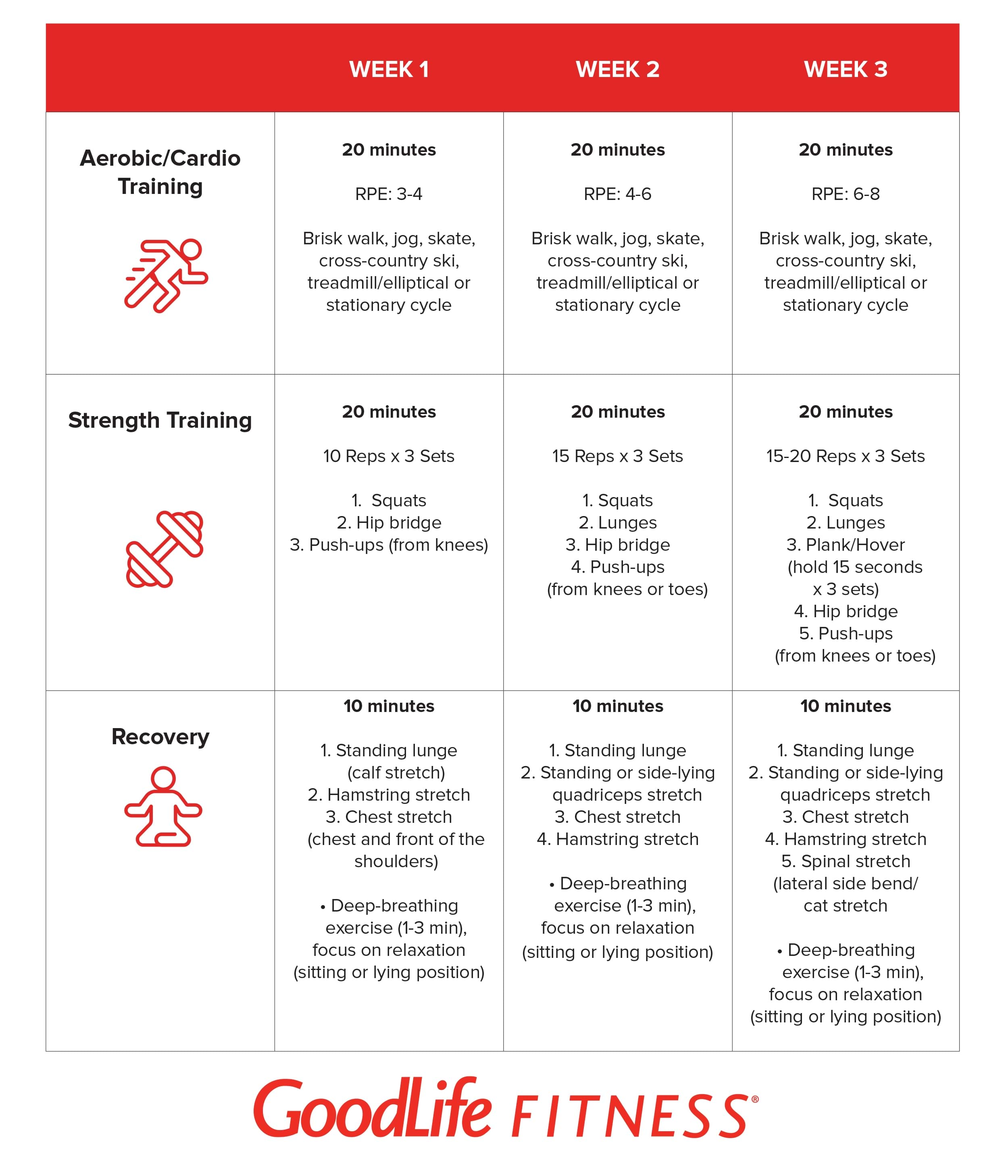If you’ve made the decision to start – or return to – exercising, you want to make sure you have a plan. Below is a 3-week workout program that fits the bill.
Build up over time
Too much, too fast, too hard, too soon – is typically the approach most people take when embarking on a fitness plan. They head to the gym five days a week for an hour, loading up the weights like they used to do or copying someone else’s strenuous workout.
Too often, they quit within three weeks because they’re sore, tired or defeated.
The key is to start by looking at the big picture: What is your fitness goal by the end of the first three weeks? Can you see yourself exercising three times a week for 50 minutes each workout? Can you fit that into your schedule on a regular basis?
Track your activity
Keeping track and sharing your progress with others can be a great way to push yourself.
During this program, grab a calendar or make a chart to record how much you’ve moved or exercised each day. Include how many minutes you worked out. You can also use a tracking device that counts the steps you’ve taken during the day.
Tracking your physical activity helps you understand your body’s ability and provides the encouragement you need to keep going.
Structuring the workout
The workout focuses on three areas: aerobic/cardio training, strength training using just body weight and a recovery period.
The workout times for these common exercises – chosen because they’re easily doable – add up to 150 minutes per week, which is the minimum recommended by the Canadian Physical Activity Guidelines.
Aerobic training
While the aerobic/cardio minutes are the same for each of the three weeks, the intensity increases on a scale of one to 10 based on the rate of perceived exertion (RPE) while doing the exercise.
- 1-2: Easy. Almost no effort is required to do the exercise.
- 3-4: Light effort. Your breathing rate is slightly increased, but you can talk freely while doing the exercise.
- 5-6: Moderate effort. Heart rate and breathing are elevated and you’re breaking a sweat, but you can still talk in sentences.
- 7-8: Hard. You require a brisk effort while doing the exercise. You can talk a few words, but would rather not. Your breathing is heavier, you can feel your heart pounding and you’re sweating.
- 9-10: Intense. You’re moving fast, are breathless and can’t talk. It’s hard to perform the exercise at that pace for more than 30 seconds.
Strength training
Squats

Hip bridges

Push-ups

Lunges

Plank/hover

Recovery
Never underestimate the importance of recovery, which includes stretching and deep-breathing exercises.
Stretching increases flexibility, aids recovery after exercise and may improve your performance. It increases blood flow to and from the working muscles, delivering nutrients for repair and recovery. It also helps flush out the chemicals from exercise that can cause post-workout muscle soreness.
Why this 3-week plan works
This workout is based on gradual progression so you can not only enjoy it, but see some success. If you don’t feel successful, it’s tougher to make working out a habit.
If you thrive on accountability, find a buddy to work out with or join you on a cross-country ski or walk. Hiring a Personal Trainer can also help hold you accountable.
After completing this program, you should feel stronger and more energetic and be sleeping better. You might not see physical differences right away, but the workout’s purpose is to be a springboard to the next phases of your fitness development.
Once you establish a regular workout routine, you can extend your plan into 3-month blocks, leading to new goals for a healthier you.
The workout

